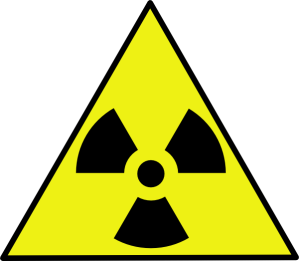Last week the news was awash with a chilling yet familiar photo – the infamous shot of 43-year-old Alexander Litvinenko dying in his hospital bed, his body wrecked by radiation poisoning.
In 2006, the former Russian spy died in London as a result of polonium-210 poisoning, believed to have been ingested via a seemingly innocuous cup of tea. Having fled from his previous life as an officer with Russia’s Federal Security Service (the KGB’s successor), Litvinenko soon became something of an enemy to the Russian government. Publishing a shocking book claiming Russia’s secret service was behind a terrorist attack in Moscow, accompanied by frequent public criticisms of the Kremlin and President Vladimir Putin, it is of no surprise that Russian authorities are suspected of being behind Litvinenko’s ruthless death.
So one fateful night a few weeks before his life ended, the former spy thought nothing of meeting with Andrei Lugovoi and Dmitry Kovtun, both with a history in the KGB, in Millennium Hotel in London to indulge in a pot of tea. But just hours after this innocent beverage, Litvinenko fell terribly ill, passing away 22 days later. His death was later attributed to poisoning by polonium-210.
Unfortunately this is not an unfamiliar story.
The politically well-connected Roman Tsepov succumbed to a similar fate in 2004, falling mysteriously ill and displaying the same symptoms that would plague Litvinenko two years later. His doctor at the time described his illness as “a poisoning without a poison… as if his immune system was switched off”. Although the motive behind his possible assassination was never established, a post-mortem concluded that he had been poisoned by some kind of radioactive material present in a concentration one million times greater than the normal amount.

Alexander Litvinenko (Source: The Independent)
Spookingly similarly, Yuri Shchekochikhin a Russian journalist known for writing on the controversial topics of organised crime and government corruption, play victim in a sadly comparable story. Due to fly to the US to meet with FBI investigators in July 2003, Shchekochikhin fell suddenly ill and died. The already suspicious circumstances were heightened by the secrecy surrounding his medical records, and Litvinenko himself later claimed that this man’s death was the result of assassination ordered by government officials, apparently unaware that he would meet the same fate.
A decade prior to this, in 1993, packing company director Vladimir Kaplun is believed to have been the first person to be murdered using radioactive material, in this instance planted in his chair, causing him to eventually die from prolonged exposure to radiation. Although never proven, the use of radioactive materials as a means of murder has been suggested in all of these cases. But just what is a radioactive substance, and what are its effects on the human body?
Radioactive Substances
We all know that everything in the world is composed of atoms – little bundles of sub-atomic particles which group together to produce substances with a whole range of characteristics and potential uses. Some of these atoms are unstable, spitting out energy in the form of radiation from the nucleus as it decays to a more stable state, and it is this type of atom that is referred to as being radioactive.
There are various types of radioactive material, categorised depending on the particles they emit whilst decaying. Ionising radiation is typically grouped as alpha, beta or gamma sources (X-rays and parts of the ultraviolet spectrum are also ionising, but we won’t discuss those here). Alpha particles consist of two protons and two neutrons (essentially a helium atom). Of the types of radiation discussed, alpha particles are the least penetrating, being halted in their tracks by just a few pieces of paper or certainly human skin. For this reason, radioactive material emitting alpha radiation is relatively safe to handle (provided you don’t eat it – then it’s a different story). Beta radiation has a greater penetrating power, having the ability to pass through a few metres of air and a few millimetres of tissue, potentially resulting in burns to the skin and eyes if contact is made. Finally, gamma radiation poses the greatest risk, being able to penetrate skin and clothing to any depth, only stopped by a sufficient amount of lead or concrete.

Alexander Litvinenko was poisoned with an element called polonium-210. Discovered by Marie Curie in the late 19th century, polonium is a naturally occurring radioactive element found in minute concentrations in a variety of places, including inside the human body (though obviously in harmless amounts). There are many isotopes of polonium, but the isotope of particular interest in this case is polonium-210 (the 210 referring to its mass). Polonium-210 emits alpha particles which, although they are poorly penetrating, as discussed earlier, can be devastating if inhaled or ingested, as Litvinenko unfortunately discovered.
The effects of radiation poisoning, though dependent on the dose of exposure, are often predictable and brutal. In the case of ingesting an alpha-emitting radioactive material, such as in the Litvinenko case, the first signs of the trauma about to follow will typically be nausea and vomiting. As the radioactive substance passes through the gastrointestinal tract, the lining of the stomach and intestines are destroyed, breaking away. If the cells attacked by the emitted particles are not instantly killed, they may later become cancerous – though in cases such as this the victim will not survive to endure this. As the GI system is destroyed, the radioactive substance is drawn into the bloodstream and transported around the body to be further deposited in organs and soft tissues, particularly building up in the liver, kidneys, and spleen to continue the destruction of the body. The material will also reach the skin and hair follicles, causing the victim to lose most if not all of his or her hair. The bone marrow will be invaded and damaged or destroyed, causing blood cell counts to plummet (a condition known as pancytopenia). The immune system effectively begins to shut down. Cerebrovascular effects may occur, leading to confusion, convulsions and comas. Within weeks or even days the exposed victim can be dead.

A typical Geiger counter (Source: Wikimedia Commons)
Radioactive material can be highly contaminating and dangerous and, unless you happen to be equipped with appropriate radiation detection devices, you will likely be completely unaware of its presence. In the aftermath of the Litvinenko poisoning, investigators tested countless suspected areas which may have been contaminated by polonium-210. Inevitably the teapot and several areas in Millennium Hotel produced high readings for radiation. In addition to this, polonium was found in hotel rooms used by the suspects, a British Airways airplane and dozens of other locations.
Furthermore, the initial detection of radioactive material is not always straightforward. Though various devices and analytical techniques have been developed to aid in the detection of radioactive substances, not all can be successfully applied to the detection of the different types of material (ie. alpha, beta, gamma). This very problem was encountered in the investigation into Litvinenko’s poisoning. When the possibility of radiation poisoning was first raised, a Geiger counter was used to check for signs of radioactivity around his body, but readings were negative. Furthermore, bodily fluid samples were subjected to gamma spectroscopy, but again efforts were futile. The problem with these techniques was that they focussed on gamma radiation, obviously not relevant to a man who had been poisoned with an alpha-emitting substance. Eventually quick-witted scientists cracked the case and discovered the presence of polonium-210, not that the knowledge had any chance of saving the victim.
References
BBC News. Litvinenko inquiry to rule on former Russian spy’s killing. [online] Available: http://www.bbc.co.uk/news/uk-35363782
BBC News. Alexander Litvinenko: Profile of murdered Russian spy. [online] Available: http://www.bbc.co.uk/news/uk-19647226
BBC News. Litvinenko: A deadly trail of polonium. [online] Available: http://www.bbc.co.uk/news/magazine-33678717
BBC News. Russia’s poisoning ‘without a poison’. [online] Available: http://news.bbc.co.uk/1/hi/programmes/file_on_4/6324241.stm
McFee, R. B. Leikin, J. B. Death by Polonium-210: Lessons learned from the murder of former Soviet spy Alexander Litvinenko. [online] Available: https://www.clintox.org/documents/WMDSIG/AACT-WMD-Death_Polonium.pdf
Russell, J. A. Wirtz, J. J. 2008. Globalization and WMD Proliferation. New York: Routledge.
Cover Source: Wikimedia Commons
